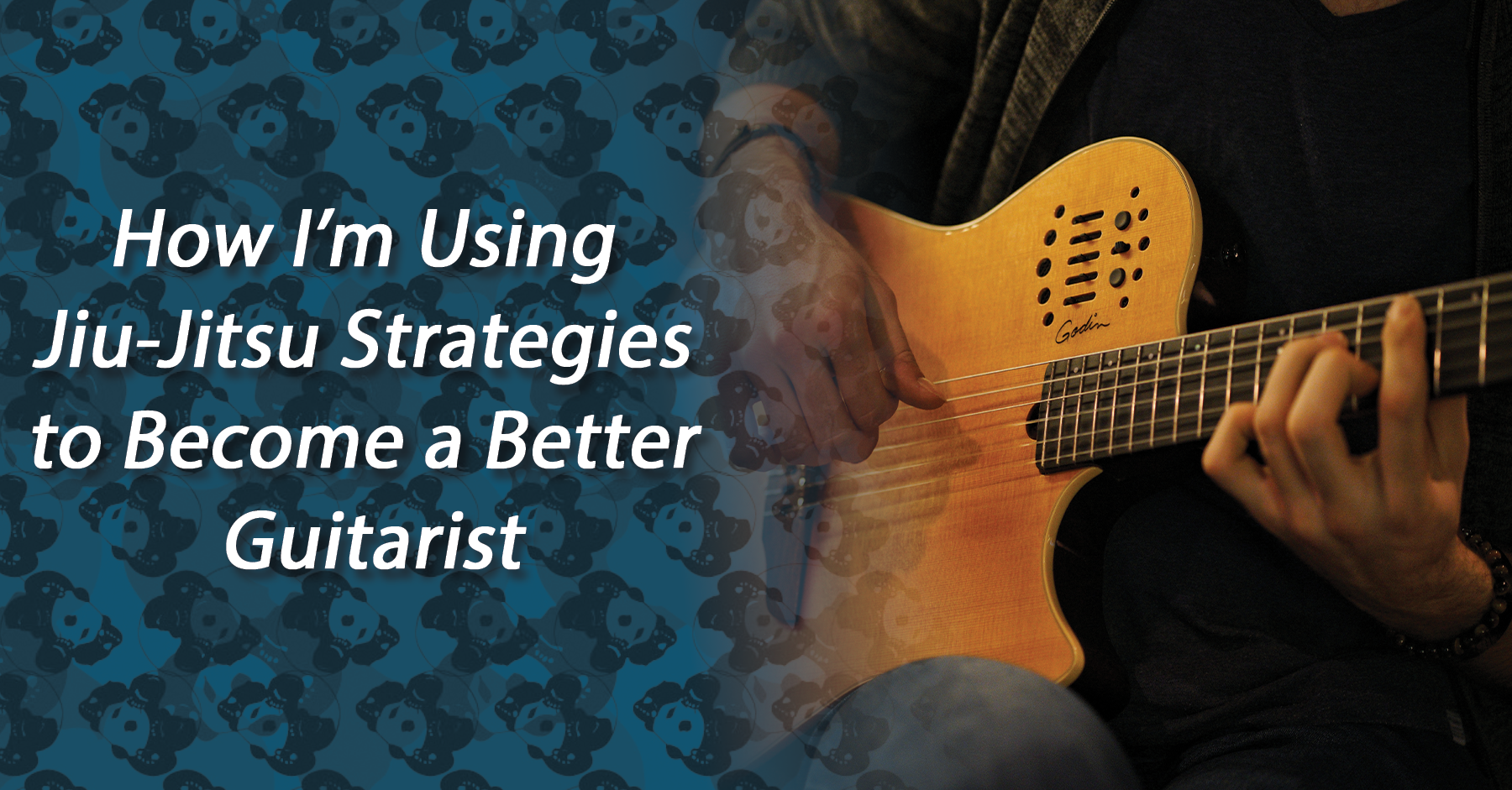
How I’m Using Jiu-Jitsu Strategies to Become a Better Guitarist
There are so many components to a well-rounded jiu-jitsu game. You need a good guard, good passing, good takedowns. You need to have capable submissions and escapes. You need to be skilled at different ranges, angles and directions. You need to be able to threaten with several different submissions from both top and bottom positions.
It can be overwhelming. With so much to focus on, how do you know you’re getting better?
Since my time at blue belt, I’ve been experimenting with an approach to try and solve this problem. I have found that limiting my practice and study to a narrow scope for a set amount of time has helped me to measure my progress more effectively, and to feel confident that I’m actually improving.
For the month of March, I had set out to utilize this process to focus on Kimuras. At home, I would study instructionals and high-level competition footage to try and pick out the central concepts which make Kimuras effective. In drilling, I would focus only on Kimuras for the entire month, practicing from one scenario one week and a different scenario the next week.
During live training, I set up mini-games for myself. In the first few days, the game might be “attempt at least five Kimuras each round.” In the later phases it could be “use a Kimura to get to the back,” or, “don’t advance position without a Kimura grip.”
This hyper-specific approach has allowed me to put more focus on growth and pay less attention to “winning” or “losing” a round. Setting my own victory conditions frees me to take risks without worrying about the consequences. If, in the early stages of working on a new Kimura setup, I miss a detail or fall behind on the timing, my partner may pass my guard. But it won’t matter. I have attempted one Kimura, and I’m closer to meeting my mark.
When every jiu-jitsu academy in the state of New York was put on lockdown, I needed something new to study. I decided to return to the guitar, which I had practiced frequently before beginning jiu-jitsu, and not much since.
When I used to play, my practice habits were scattered. I would fiddle around and play a few scales, a few tunes, a few chords. I never engaged in more than a day or two of concerted practice in one subject before jumping erratically to something else.
With at least a month of free time stuck indoors, I’ve decided this time to pick a single concept, and to practice it the way I’ve practiced so many jiu-jitsu techniques. I’m focusing on triads.
A triad, like a Kimura, is useful because it can be used nearly anywhere. It’s a great point of transition, a portal to take you from one point on the neck to any other. In layman's terms, a triad is a three note chord. In its basic form, you can only find any given triad on a few points of the fretboard. But if you change its shape, it suddenly becomes omnipresent. Once you understand how to reshape it, the complicated fretboard of the guitar unveils itself.
I spend a bit of time learning from instructors online, looking for insight into theory that can help me better understand how and why triads work. I pay attention to the details that can enhance my understanding. When I’m practicing techniques or warming up, I only use drills related to triads. Then I start playing over backing tracks.
I treat backing tracks like rolling sessions. It is my time to try to connect the skills I have to the ones I’m learning. I set conditions for myself. In a 10-minute track, my aim might be to use every different triad position for a single chord at least once. Or I may look to find any one of the appropriate triads every time the chord changes on the track. The most important thing is that I’m not playing aimlessly, I’m working on applying the skill set I’m trying to develop.
By the time the quarantine is lifted, I will not have mastered the guitar. But I know that I’ll have better control of this one component than I did when I started.
This approach isn’t limited to jiu-jitsu, and it’s not limited to music. You can apply it to any field of practice or study which has enough sub-categories to seem daunting. You may want to spend your time away from training to get better at yoga. If you concentrate on one element, such as breathing or balancing, for a month, you’ll find measurable success.
The key is to pick something specific and ubiquitous. The value of both Kimuras and triads is that they are a microcosm or jiu-jitsu or music. When you have control of triads, you also have control of chords, scales and arpeggios. When your Kimura has improved, so has your understanding of principles such as isolation, leverage and angle. If, after I’ve completed my study on Kimuras, I decide never to use another figure-four lock again, the lesson will still stick with me.
Corey Stockton is a brown belt at East Coast United BJJ in White Plains, NY under Jojo Guarin. He competes more often than is healthy, and spends the rest of his free time writing about other, far superior competitors for FloGrappling.
Other articles:
Quick links
Contact us
About us
Quality BJJ gear at fair prices, available all year. Founded in 2012 to provide an alternative to high-cost, limited edition gis. Dive into the BJJ lifestyle with us—join the Panda Nation!"
